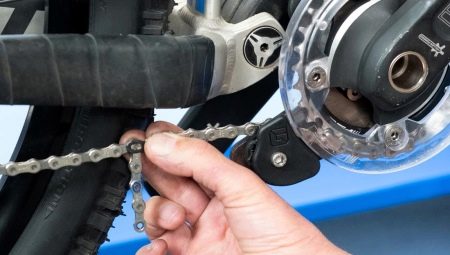The bike chain is an important part of the bike and needs regular maintenance. Not only the ease of use of the vehicle depends on its technical condition, but also the safety of the cyclist. Therefore, the question of the right choice of chain care products is relevant and worries many.

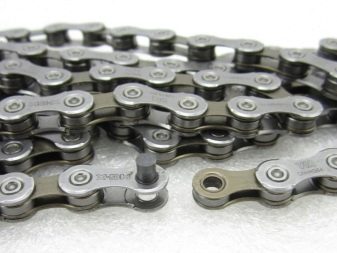
Why lubricate the chain?
The bicycle chain requires constant cleaning and timely lubrication. If these procedures are neglected, then over time it will begin to publish unpleasant squeaks or chatter. Furthermore, without lubrication, it is very difficult to adjust the rear gearshift. A lubricated chain does not allow sand and dirt to penetrate the joints and work as an abrasive, while in a dry chain there is a quick boring of the pin seats, leading to a lengthening of the chain.
The stretched chain, in turn, entails damage to the teeth of the cassette and the front stars. This leads to an increase in noise and lower efficiency, which is why the cyclist is forced to spend much more effort to maintain the desired vehicle speed.

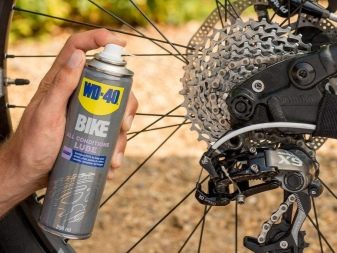
Especially often, chains of mountain and tourist bikes that operate in off-road conditions need lubrication. Fans of cycling and extreme sports are forced to devote a lot of time to the condition of the chain, while owners of urban bikes that move exclusively on tiles or asphalt may not particularly worry about the condition of the chains and lubricate them several times during the season. However, this relief is allowed only if the bike is not used in rainy weather and is stored in a dry room.
If the bike is exposed to rain, then the chain is thoroughly cleaned of sand and dirt with a special machine or toothbrush, and then greased liberally. Otherwise, adhering dirt will provoke corrosive processes and cause chain rusting.


Types of grease
Lubricants for bicycle chains are classified according to such characteristics as the form of release, application conditions and chemical composition. According to the first criterion, 3 types of lubricants are distinguished.
- Fluid lubricants they are very easy to apply and in their consistency resemble engine oil. The compositions are sold in convenient small-volume bottles and equipped with a dropper.
- Spray grease also convenient to use and represented by an oily substance sprayed onto chain links in the form of an aerosol. This form of release is optimal for application in the field, because of which it can often be found in a bicycle kit. However, at home, many bikers prefer to use other lubricants, since when applied to the chain, most of the oil is sprayed to nowhere.
- Grease in most cases, they serve as the basis for the preparation of two-component compositions and are not themselves applied to the chain. Immediately before use, a solvent is added to them, which, after application to the chain, quickly disappears, causing the lubricant to harden. Such compounds are used in rainy weather, effectively protecting the metal from the harmful effects of water.



The next sign of lubricant classification is the conditions of use. According to this criterion, the funds are divided into those that are suitable only for dry weather and moisture resistant compounds.
- Compositions for dry weather, after application to the chain, dry out and form a protective film similar to a whitish coating. The film prevents dust and dirt from sticking to the chain, but is quickly washed off with the first rain.
- For wet weather, water-repellent greases are used, which are uniformly applied with a thick layer to the chain. Such compounds stain clothes and attract dust, but they withstand heavy rainfall and driving through puddles and mud.
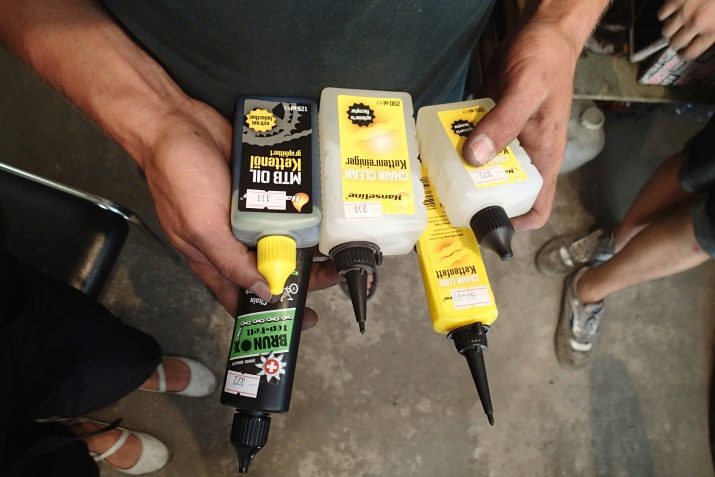
According to the active substance, lubricants are divided into 5 types. Let's consider them in more detail.
Paraffin
Wax grease is considered quite an expensive remedy. With its help, a thin protective layer is created on the surface of the chain that repels dust and dirt. However, its use involves preliminary cleaning and washing the chain, which is not always possible.
Besides, the application of the paraffin composition must be strictly dosed, otherwise the wax will clog all bushings and chain joints. In order to independently prepare wax grease, paraffin is rubbed on a grater and mixed with aviation kerosene in a 1: 2 ratio.
The mixture is left for 3 days to completely dissolve the paraffin clots, after which it is applied to the chain. As practice shows, one wax treatment is enough for 500 km of track in dry weather and 200 km in rain.
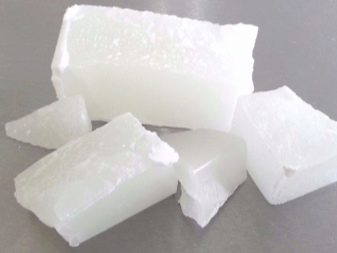
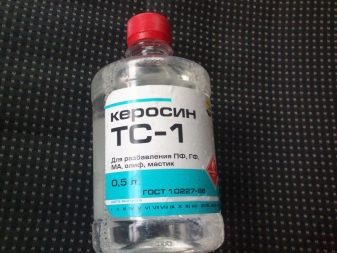
Teflon
This type of lubricant is considered the most common in a bicycle environment and is characterized as most reliable and efficient. Moreover, Teflon compounds are sold at an affordable cost and are present in all bike shops. As the name implies, the main active ingredient in them is Teflon, which envelops the chain and forms a thin protective film on it. Dust, sand and dirt do not stick to the surface, and it remains clean for a long time.
Teflon lubricants are available in the form of liquids and aerosols, but experienced bikers advise you to purchase exactly the liquid formulations. This is due to the fact that when a lubricant is sprayed onto a chain, a significant part of the substance flies by, dirtying neighboring parts and causing an overuse of the product.
The disadvantages of Teflon lubricants include too rapid leaching of the composition, which is why during rain they last for no more than 50 km.
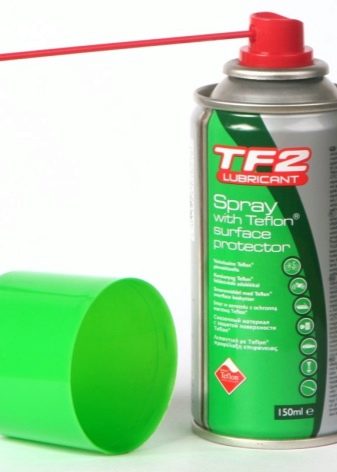
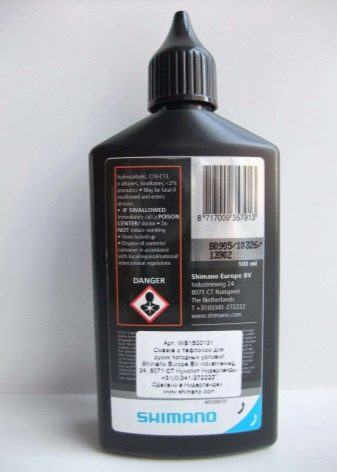
Silicone
The principle of lubrication with silicone is the same as that of Teflon compounds: silicone forms a thin film on the surface of the chain that repels dust and dirt. More often, silicone grease is available in the form of aerosols, which is not very convenient for lubricating small chain elements. According to the subjective assessment of experienced cyclists, up to 50% of the total volume is sprayed past the target. The disadvantages of silicone grease include the need for frequent application, since one treatment is enough for no more than 30-40 km.
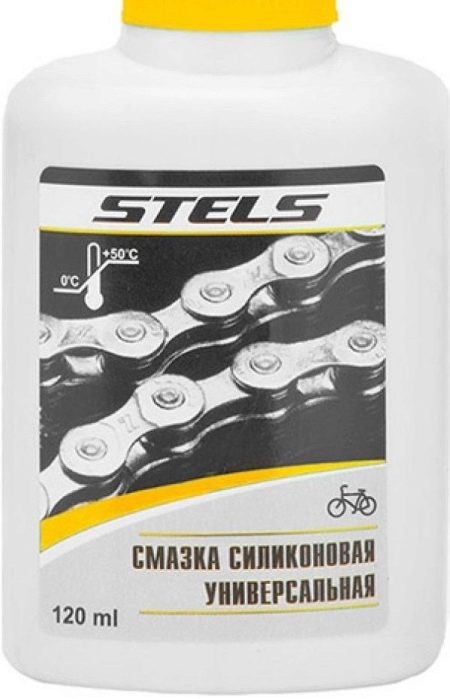
Graphite
This grease protects chain elements from rapid wear and has high anti-corrosion properties. In addition, the tool is able to penetrate the most inaccessible sections of the chain, reduces the negative impact of friction and does not wash out for a very long time. In dry weather, one treatment is enough for 150 km of track, with rain or driving through puddles - for 70-80 km.
The grease is available in the form of a very thick consistency product, which is mixed with Kalosha gasoline in equal parts. According to the observations of many bikers, one syringe mixture with a volume of 20 ml is enough for 4 lubricants.
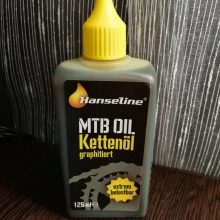
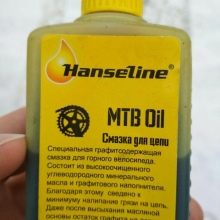
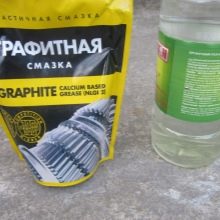
Molybdenum
The molybdenum disulfide grease is highly resistant to extreme temperatures and has a good lubricating effect. It forms a long-lasting moisturizing film that reliably protects chain links from dirt sticking and reduces the negative impact of friction. Molybdenum compounds are available in the form of aerosols and oily liquids in bottles with a volume of 70 ml or more.
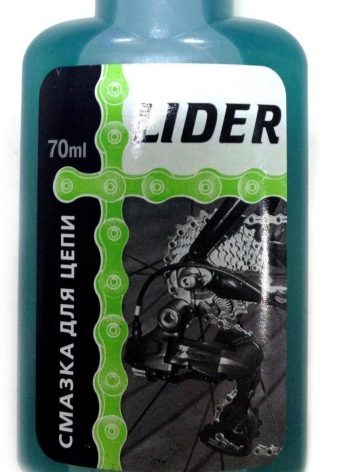
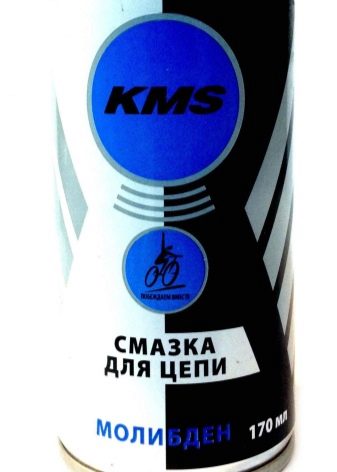
What can not be used?
It is strongly not recommended to lubricate bicycle chains with thick lubricant mixtures such as lithol, solid oil and used oil (running out). Such a lubricant is not able to penetrate hard-to-reach sections of the chain and attracts a huge amount of dust. Use with caution and Wd-40, which contains white spirit. The peculiarity of this component is that it does not have an enveloping effect, but, on the contrary, washes off the remnants of lubricants.
You can not use machine oil, which collects and holds dirt and sand, and sunflower oilwhich does not have a lubricating effect and drains quickly to the ground.
Oils for sewing machines and gearboxes are also not the best options for chain lubrication: they attract a lot of dust and do not protect from water.

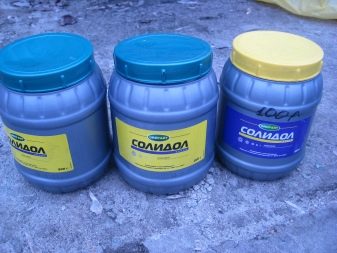
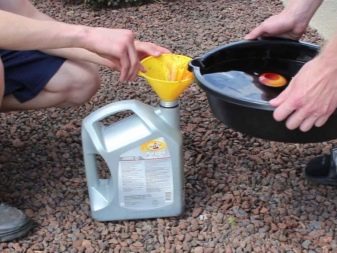

Manufacturers Overview
The modern market offers a huge amount of chain care products at home. Below is a ranking of the most popular formulations, the positive reviews of which are most often found on the Internet.
- The top manufacturer is Shimano, a well-known manufacturer of accessories and accessories for bicycles, producing quality care products for various components of the bicycle, including chains. An example is dry weather lubricant. Shimano PTFE Dry Lube. The product is available in a small bottle with a volume of 170 ml, has a convenient dispenser and is characterized by low consumption. Users note that the chain becomes less dirty, and the cycle becomes quick and very easy. The cost of lubrication is 354 rubles.
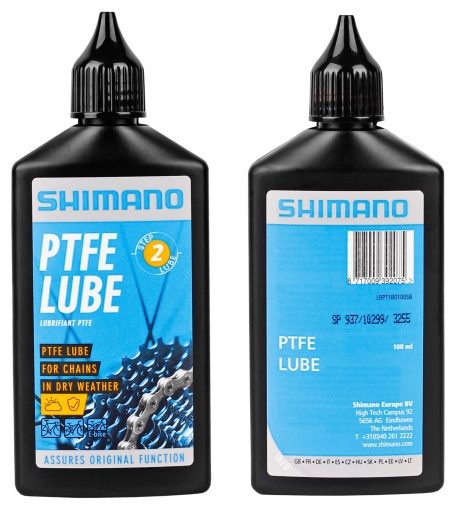
- The second line of the ranking is occupied by the German company Lider with its eponymous grease based on molybdenum disulfide. The product is available in a bottle or tube with a capacity of 70 ml, works perfectly at high temperatures and has a more than reasonable price - 176 rubles.
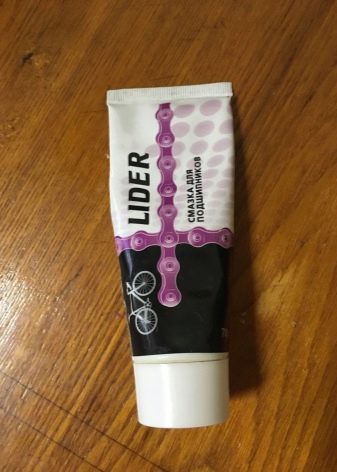
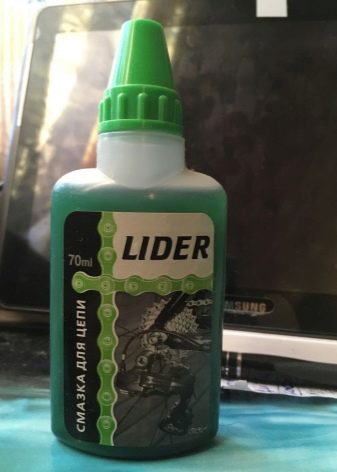
- Chain oil Special Chain lubricant Rohloff also produced in Germany and meets all modern requirements for lubricants. The grease works well under high loads and protects the chain joints from dirt and moisture. Moreover, the tool is created on a biological basis, which means its absolute harmlessness to humans and the environment. Lubrication is low in consumption and is one of the best chain care products. The cost of a 50 ml bottle is 490 rubles.
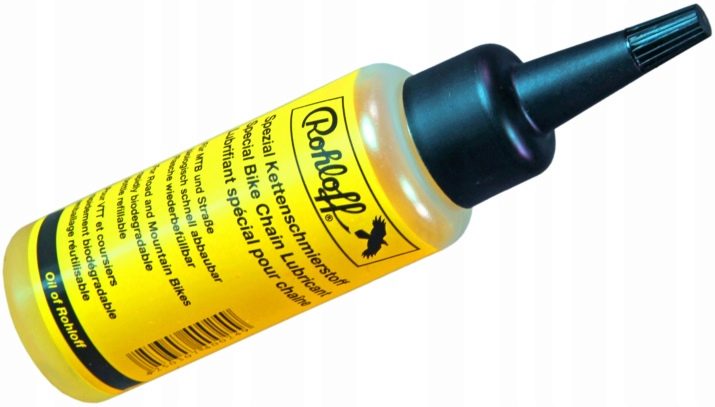
- Bike Chain Lubricant Mottec Grease For Bicycle Chains It is made in Holland and is specially designed to facilitate cycling at high speeds. This was made possible thanks to the presence of polytetrafluoroethylene (PTFE), which provides very easy chain sliding. Another substance called revitalizant prevents the rapid wear of chain links and prevents its stretching.
The lubricant penetrates well into hard-to-reach places, protects the metal from corrosion and, despite the aerosol form of release, is quite economical. The cost of a bottle with a capacity of 200 ml is 600 rubles.
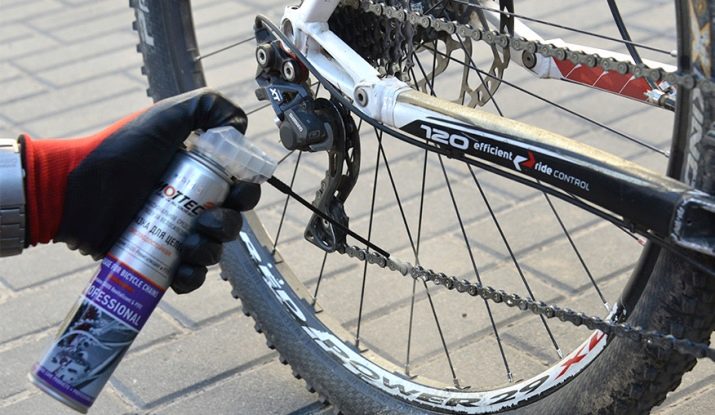
- Chain Spray Lubricant Nanoprotech 210 ml made in Holland effectively protects the metal from moisture and corrosion, eliminates creaking, frees rusted links from rust and greatly facilitates the course. Moreover, the product prevents freezing of the joints in cold weather, reduces friction, extends the life of the chain and is great for preserving a bicycle for the winter. The cost of a 210 ml bottle is 400 rubles.
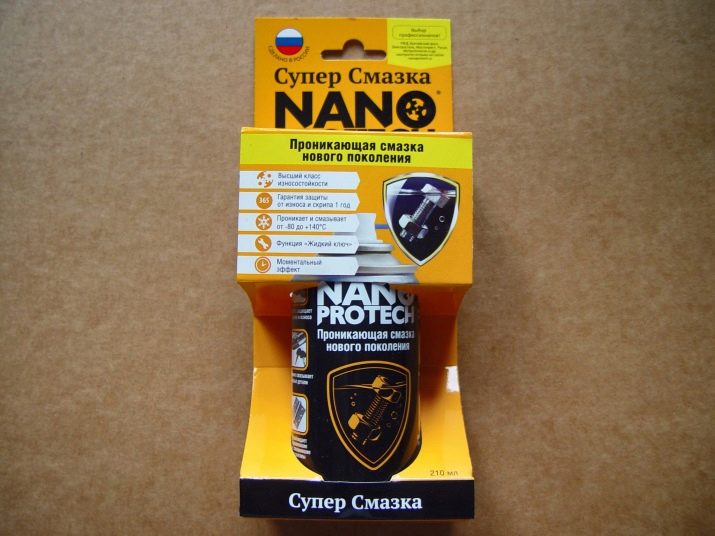
- Ceramic oil Ballistol bikeer manufactured in Germany, it has been specially developed for bicycle chains operating in extreme conditions. The agent is applied pointwise to the chain and significantly reduces friction and wear of the links. In addition, it perfectly protects the metal from corrosion, penetrates all inaccessible places and displaces water from the surface of the chain. Thanks to good adhesion, the time between lubricants increases significantly, which leads to cost savings. A bottle of oil with a volume of 100 ml costs 700 rubles.
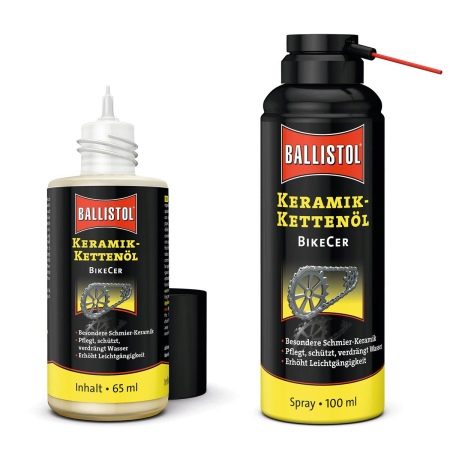
How to choose?
When choosing a lubricant for a bicycle chain, you should first focus on the conditions in which you have to operate the bike. So, for dry weather, it is recommended to buy products with a “dry” mark on the bottle. However, it is worth noting here that not all types of dry lubricants are equally good and there is no universal option among them.
For example, graphite, teflon and silicone compounds perfectly protect the chain from contamination and have a high lubricating effect, but they stain everything around. Therefore, those who care about the ideal cleanliness of the vehicle should use wax formulations. But they also have a significant minus - in comparison with Teflon, silicone and graphite lubricants, they have a low lubricating effect.
If you plan to use the bike in the rain, then you need to choose lubricants marked «wet» on the label. Usually inside is a thick grease that is diluted with a solvent.
When applied to a chain, it quickly penetrates into all inaccessible places and, after evaporation of the solvent, densely envelops the links. The product is not washed with water, but in dry weather it attracts dust and sand. In rain, as well as when driving through puddles and wet grass with such a lubricant, you can drive up to 200 kilometers or more.
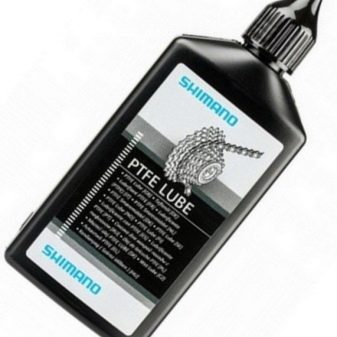
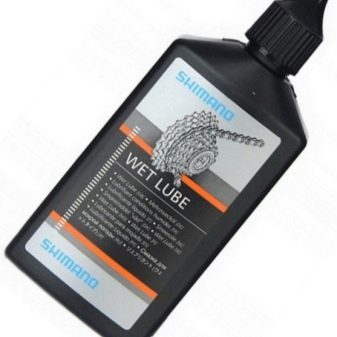
Homemade products
If there is no opportunity to visit a specialized store, and the chain urgently needs lubrication, then home-made preparations prepared from improvised tools will help to “reach out” to the house. So, for dry weather a composition of 6 parts of solid oil, 3 parts of engine oil and 1 part of graphite powder, which is scraped from the brushes of the electric motor using ordinary sandpaper.
Another composition can also be prepared by combining 8.5 parts of lithol, 1 part of graphite powder and 0.5 parts of soap. The components mix thoroughly and lubricate the chain. If there is nothing at hand, then in extreme cases, the use of machine transmission oil is allowed. Upon arrival home, the chain is thoroughly washed from a homemade product and a special bicycle grease is applied.
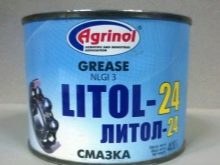
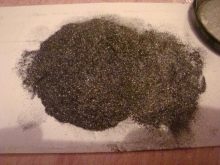
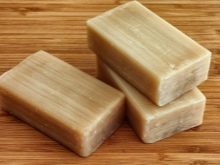
For rainy weather, prepare such a mixture: in equal parts, take automotive lubricant No. 158 for the driveshaft and mix it with lighter fuel or Kalosha gasoline. The resulting mixture is densely coated with all the links of the chain, not forgetting upon arrival "to civilization" to quickly wash off this product and process the chain with a high-quality composition.
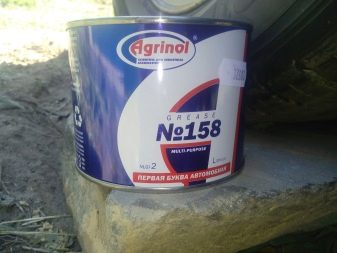
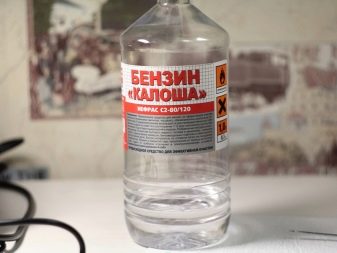
See below for how to choose grease for your bike chain.
